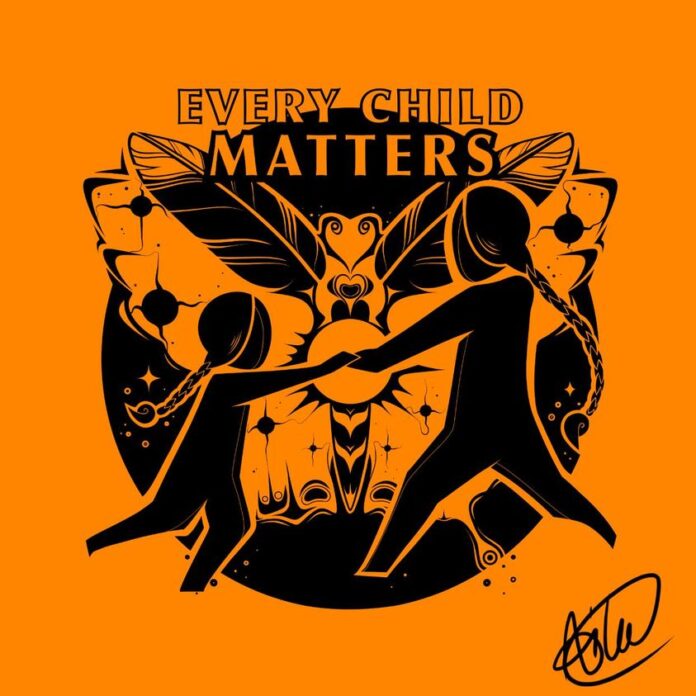Local Journalism Initiative
Each member of Prince Albert City Council was given a locally designed orange shirt from the Indian and Metis Friendship Centre on Monday.
The shirt has a design created by Ailah Carpenter, “a very well thought out young lady,” said Janet Carriere, co-chair of the Prince Albert Urban Indigenous Coalition in her presentation to council on Sept. 13.
“On the back are the words that I think always need to be there. We must never, never forget,” Carriere said. “I want to thank you all towards working towards reconciliation. I know it means something different to each and every one of us.”
“To me we’ll never reach reconciliation until we reach a place of equality. So that means a lot of work. We’re all going to have to do a lot of work to keep moving forward in a positive way,” she stated.
Carriere expressed some trepidation about the change of Orange Shirt Day to the National Day for Truth and Reconciliation, the first one is to be marked this Sept. 30.
“My fear is that we’ll forget what that day is meant to be and that people will stay home and do nothing,” she said.
She will be asking council to support an event on the day to make sure it is acknowledged for what it is supposed to be – a day to remember – and not let people downplay the events that led up to it as she feels has happened to Remembrance Day.
“I feel a lot of people on November 11 just stay home and have a holiday. They don’t truly honour the veterans that gave their lives for our country. So I think we need to try to keep this day alive,” Carriere said.
One sleeve of the shirt has the print of the Friendship Centre’s logo and the other has the City of Prince Albert’s logo. They are available for purchase at the Friendship Centre, which sells them at cost and earns no profit from them.
“Flying Back Home is a design for Orange Shirt Day, which shares a message of hope in four parts,” explained Carpenter about her design. “One is hope in the form of strength, shown with eagle feathers; One is hope in endless purpose, represented with the stars; One is hope following change, represented in the life cycle of a butterfly; And one is hope in the form of future generations, presented in the children who stand united.”
“This design is for everyone that’s been impacted by residential schools. With every step we make to honour lost loved ones, we are bringing our ancestor’s home.”


